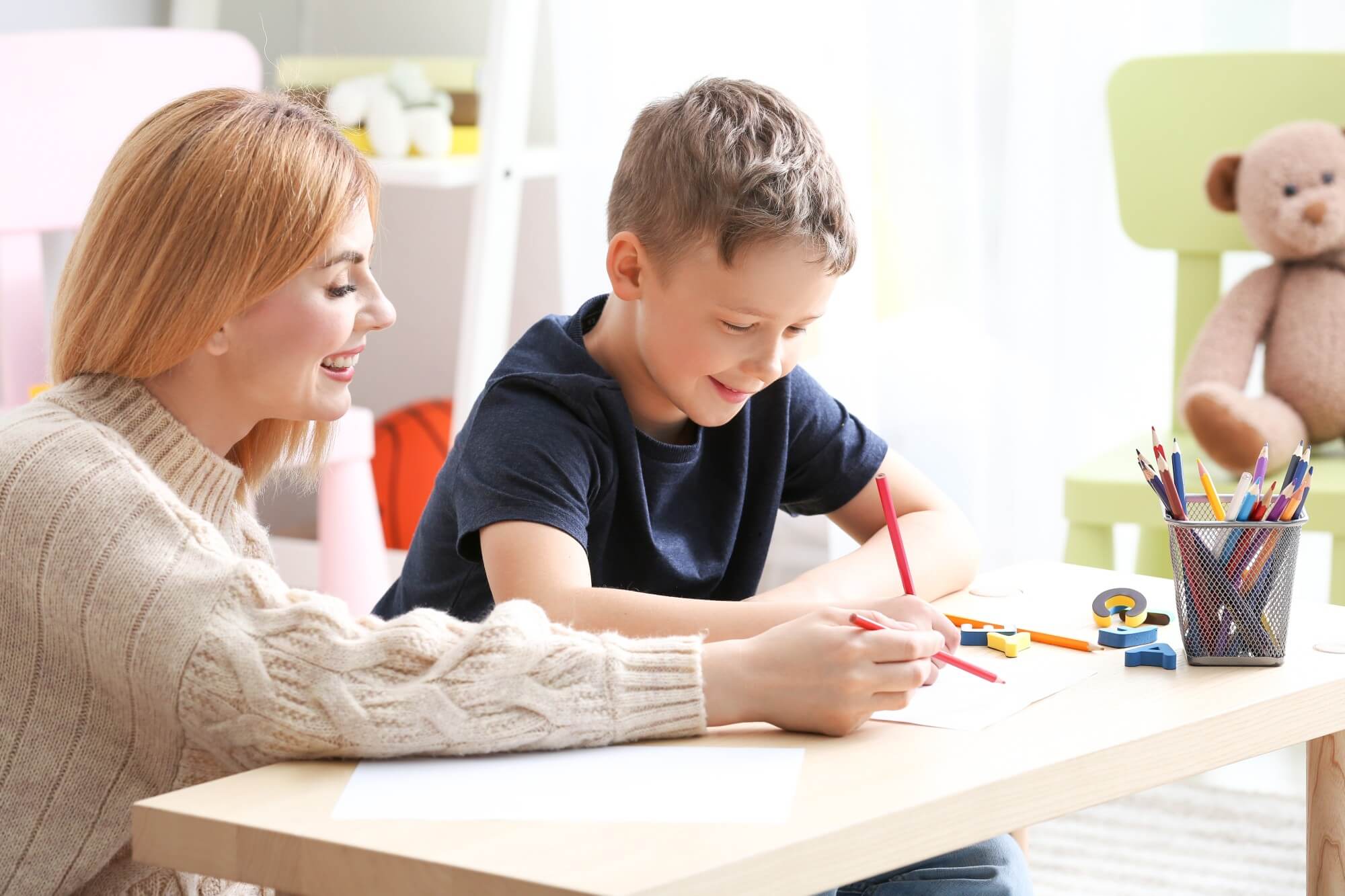This article was reviewed by Samantha DeRose, MA, BCBA, a Board Certified Behavior Analyst at Spectrum Behavioral Therapies
Daily routines can bring comfort, but for many parents of children with autism, they can also be a source of stress, uncertainty, and constant adjustment. Understanding why routines matter and how changes affect your child can make each day feel more predictable and manageable.
Why Do People With Autism Prefer Routine?
Many with autism like routine because predictability makes them feel safe and secure while going about their day. Autistic people prefer to know what is going to happen and struggle with uncertainty. This applies to both children and adults.
Why Are Routines and Schedules Important for People With Autism?
Those with autism appreciate routines because they tend to struggle with adapting to changes—though it’s important to note that not all autistic people share this experience.
This difference in expectations can cause anxiety and confusion. This is especially true for autistic children who are still learning and getting used to their schedules. Signs of distress due to changes in routine include:
- Anger
- Any form of self stimulatory behavior
- Being uncooperative
- Confusion
- Lack of focus
- Lack of motivation
- Tantrums
- Yelling
Having and following a routine creates:
- Confidence: Routines provide a sense of control for those with autism. That control turns into confidence as they complete each day.
- Safety: Many autistic individuals struggle with uncertainty, and routines offer a sense of safety.
- Focus: Following a routine makes focusing on tasks or activities easier, thanks to a smaller cognitive load.
- Better relationships: A smaller cognitive load also allows more effort to be spent on connecting with loved ones.
- Cooperation: Because routines create a safe and comfortable environment, autistic individuals are more likely to cooperate with others.
What Counts as a Change in Routine to Autistic Individuals?
Understanding what changes mean to autistic loved ones can be difficult. What one person considers a small change can be a major disruption to an autistic child or adult.
So, what counts as a disruptive change to a schedule for autistic children and adults?
- Cancelled events
- Changes in task processes
- Environmental changes
- Familiar people not being around
- Furniture changes
- How clothing feels
- How clothing is washed
- How food is cooked
- Leaving the house
- Lighting changes
- New food
- New people
- New places
- New tasks
- Not finishing a task or activity
- Running behind schedule
- Times meals are served
- Using a different brand of a product (example: toilet paper)
What Types of Schedules Help Autistic Children and Adults?
Any of the options below can be used as a daily or weekly schedule. Which you use will depend on how much information a person can take in at once.
Step-by-Step
If an autistic child or adult struggles with remembering what to do during the day, a step-by-step breakdown can help.
Example: A Typical Weekday
Normal schedule:
- Go to school
- Pick up sibling
- Go home
Adjusted schedule:
- Go to school
- Fire drill at school
- Pick up sibling
- Stop by the market
- Go home
- Go out for dinner with friends
- Go home
Task-by-Task
Similar to a step-by-step routine, you can use a task-by-task routine. This can map out a whole day for those who get overwhelmed when told a lot of information at once.
Example: An Average School Day
- Wake up.
- Eat breakfast.
- Get dressed.
- Brush teeth.
- Wash face.
- Go to school.
- Come home.
- Do homework.
- Eat dinner.
- Free time.
- Go to bed.
Visual
Visual schedules or routines are simply presented in a visual form. Some autistic people, especially children, find visual cues easier to understand than verbal instructions.
Visual scheduling aids include:
- A calendar with tasks listed
- A poster of all tasks and timetable
- A video of everything happening during the day
- Flashcards
- Interactive calendars
- Pictures of the people they will be meeting
- Pictures of where they will be going
Looking for personalized help? Talk with our team about creating a flexible daily routine through ABA support.
How Can You Help Someone With Autism Adapt to Changes in Routine?
While routine is preferred, it’s impossible to live without change. However, learning how to adapt is a complex challenge. Here’s how you can make changes in the routine of an autistic child or adult.
- Communicate Early
Talk to the individual as soon as possible. Depending on the age, just alerting an autistic person to a change can help mitigate a lot of negative emotions. However, many autistic children do better with open communication and time to prepare.
You can help prepare them by explaining the change while providing timetables or visual aids—depending on which method is better for them.
- Understand There May Be Anxiety
There are a lot of negative emotions involved with change for autistic individuals, which are most likely tied to anxiety. When making a change, keep in mind anxiety fuels the other person’s action. See if there are ways to mitigate those anxieties.
- Start Small
Do not start with a major change if your autistic loved one has little to no adaptive abilities. That’s just unfair to you and them. Instead, start small: Change the room where an activity happens. As they get more comfortable with change, you can scale up.
Teach Coping Mechanisms
Different coping strategies include:
- Deep breathing
- Music
- Quiet time
- Sensory toys/tools
How Spectrum Helps Families Build Healthy Routines
Spectrum Behavioral Therapies works alongside families to create simple, predictable routines that support each child’s unique needs. Our approach blends ABA strategies with practical, real-life tools parents can use every day:
- Play-Based Scheduling for Smoother Transitions
We use play to help children practice moving from one activity to another. For example, a therapist might turn clean-up time into a matching game or use a favorite toy to “lead” the child to the next activity. These small, playful routines make transitions feel safe and fun.
- Family Collaboration at Home and School
Our team partners with caregivers to break routines into clear, manageable steps. Together, we might outline a morning routine with visuals, or create a simple after-school sequence like “snack → homework → free time.” Parents help choose what works best for their home.
- Parent Coaching That Builds Confidence
We teach caregivers how to support routines consistently, such as using countdown timers, previewing upcoming changes, or reinforcing effort during challenging moments. With guidance, parents learn when to step in, when to step back, and how to help their child adapt.
“Spectrum Behavioral Therapies has been such a big help for my son. We’ve seen real progress in so many areas, and it’s been amazing to watch his confidence grow along the way.” – Loren T
Get Expert Advice
The final step in making changes to someone with autism’s schedule is getting help from experts. Don’t implement changes alone. Get experts involved.
Spectrum Behavioral Therapies proudly supports children and families across Orange County, California, offering guidance and ABA-based strategies to help them navigate routine changes with confidence.
Frequently Asked Questions About Autism and Routine
What if my child resists changes in routine?
Many autistic children feel anxious about the unexpected. Start with small changes, prepare them in advance, and use tools like countdown timers or visual reminders to ease the transition.
How do I help my child handle unexpected schedule changes?
Preview the change as early as possible, use simple language, and offer reassurance. Visual aids—like updated calendars or pictures—can help make the new plan feel predictable.
Do visual schedules actually help autistic children?
Yes. Many autistic children process information better visually than verbally. Calendars, picture cards, and step-by-step visuals reduce uncertainty and help them understand what comes next.
Explore our ABA therapy service areas.









